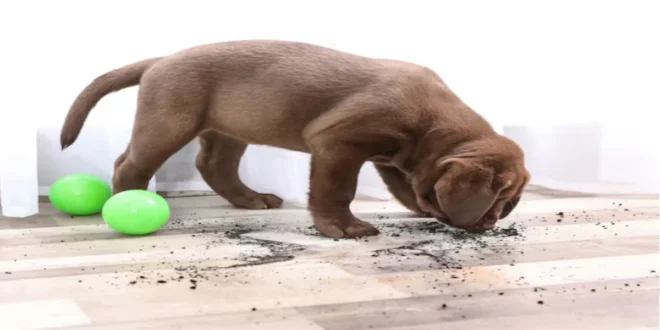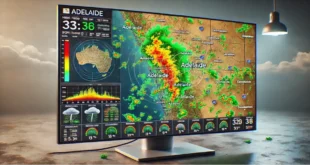Will Dogs Eat Mothballs? Understanding the Dangers and Risks
Mothballs, commonly used to keep pests away, can pose a severe threat to pets, especially dogs. Despite their effectiveness in preventing moths and other insects, mothballs contain toxic chemicals that can be harmful if ingested. Dogs, due to their curious nature, may be drawn to mothballs, especially when they are placed in easily accessible areas. The dangers of mothball poisoning can lead to serious health complications, including nausea, vomiting, seizures, and even death. In this article, we will explore the risks of dogs eating mothballs, symptoms of poisoning, what to do if your dog consumes mothballs, and how to keep them safe from such hazards. By understanding the dangers, dog owners can take steps to protect their furry friends.
Introduction: The Dangers of Mothballs for Dogs
Mothballs are a common household product used to keep insects, especially moths, away from clothing and stored items. While they may be effective in their intended purpose, mothballs contain chemicals like naphthalene or paradichlorobenzene, which are highly toxic to pets, particularly dogs. As curious animals, dogs are often attracted to the smell of mothballs, which can lead to accidental ingestion. Unfortunately, many pet owners are unaware of the risks that mothballs pose to their dogs until it’s too late. In this article, we’ll explore whether dogs will eat mothballs, the symptoms of poisoning, and how to keep your pet safe from this dangerous chemical hazard.
What Are Mothballs?
Mothballs are small, solid balls that release fumes to repel moths, fleas, and other insects. Typically used in closets, storage spaces, and attics, mothballs are made from chemicals such as naphthalene or paradichlorobenzene. Both of these chemicals have a strong odor that humans find unpleasant but is highly effective at driving insects away. Mothballs come in various forms, including traditional solid balls, flakes, and aromatic crystals. While they are designed to protect your belongings from pests, they also pose significant dangers to animals.
Types of Mothballs and Their Ingredients
There are two primary types of mothballs: those made from naphthalene and those made from paradichlorobenzene. Both chemicals are toxic to dogs but differ in their chemical makeup and intensity.
- Naphthalene: This is the more common ingredient used in mothballs. It is highly volatile and can produce fumes that irritate both humans and pets. Naphthalene is derived from coal tar and has a distinct odor.
- Paradichlorobenzene: This chemical is often found in mothballs marketed as “odorless” or “safer.” While it may be less pungent than naphthalene, it is still toxic to dogs.
Why Are Mothballs Dangerous for Dogs?
Mothballs are dangerous to dogs primarily because of the toxic chemicals they release. When ingested, naphthalene and paradichlorobenzene can cause severe poisoning in pets. The effects can range from mild gastrointestinal upset to life-threatening conditions. Dogs are particularly vulnerable because they are more likely to ingest non-food items, especially if the items are aromatic and attract their attention.
Toxic Effects on Dogs
Both naphthalene and paradichlorobenzene can have toxic effects on a dog’s liver and kidneys. When ingested, these chemicals are absorbed into the bloodstream, where they can wreak havoc on the dog’s internal systems. Some of the symptoms of mothball poisoning in dogs include:
- Vomiting
- Diarrhea
- Lethargy
- Tremors or seizures
- Rapid breathing or panting
- Loss of appetite
- Disorientation or confusion
In severe cases, mothball poisoning can cause kidney failure, liver damage, or even death. Because dogs metabolize toxins differently than humans, the amount of exposure that would be safe for a person can be life-threatening for a dog.
Will Dogs Eat Mothballs? The Curious Nature of Pets
Dogs are naturally curious creatures, and they often investigate their environment by sniffing, licking, and sometimes eating things that aren’t food. Mothballs, with their strong scent, can easily attract a dog’s attention. If a mothball is placed in an area that is within reach, it’s possible that your dog may decide to take a taste.
While some dogs may not be interested in mothballs, others may be more persistent. Certain breeds, such as retrievers, are particularly known for their tendency to chew on anything they can find. Smaller dogs or puppies may be more inclined to explore their surroundings with their mouths, making them more likely to consume harmful substances like mothballs.
Common Scenarios When Dogs Might Eat Mothballs
- Storage Areas: Mothballs are often stored in places like closets, attics, or basements. These areas may not always be dog-proof, and if the mothballs are left in accessible spots, your dog may find and consume them.
- Outdoor Exposure: If mothballs are used in outdoor spaces or gardens to repel pests, your dog may come into contact with them while roaming around.
- Accidental Access: Sometimes, mothballs are mistakenly placed in areas where dogs roam freely, such as inside vehicles or under furniture. This can increase the likelihood of ingestion.
Symptoms of Mothball Poisoning in Dogs
Recognizing the symptoms of mothball poisoning is crucial for a dog owner. The sooner you spot these signs, the faster you can seek veterinary help. The symptoms can vary depending on the amount of mothball ingested, but common indicators of poisoning include:
Gastrointestinal Symptoms
- Vomiting and Diarrhea: These are often the first signs of mothball poisoning. Your dog may start vomiting shortly after ingesting a mothball, followed by diarrhea. These symptoms indicate that the body is trying to rid itself of the toxin.
- Loss of Appetite: A dog who has ingested mothballs may refuse to eat due to nausea or stomach discomfort.
Neurological Symptoms
- Seizures and Tremors: As the toxins begin to affect your dog’s nervous system, you may notice shaking or trembling. In severe cases, seizures can occur, which require immediate veterinary intervention.
- Disorientation: Poisoned dogs may become disoriented, wandering around aimlessly or appearing confused.
Respiratory Symptoms
- Rapid Breathing or Panting: Dogs with mothball poisoning may exhibit difficulty breathing or excessively rapid breathing as their body tries to cope with the toxins.
- Mucus or Foaming at the Mouth: Excessive salivation and foaming can occur due to the body’s reaction to the poison.
If your dog shows any of these symptoms, contact a veterinarian immediately. Mothball poisoning can be fatal if not treated promptly.
What to Do If Your Dog Eats Mothballs
If you suspect that your dog has eaten a mothball, it is important to act quickly. Time is of the essence when it comes to treating poisoning.
Immediate Steps
- Contact Your Veterinarian: Call your vet or an emergency animal hospital for advice. They will guide you on the next steps based on the amount of mothball ingested and the symptoms your dog is showing.
- Induce Vomiting (If Advised): Your vet may suggest inducing vomiting if the ingestion was recent. This helps your dog expel the poison before it is absorbed into the bloodstream.
- Provide Information: Be prepared to give your vet details, such as the type of mothball ingested (naphthalene or paradichlorobenzene), the quantity, and the time of ingestion.
Treatment
Treatment for mothball poisoning depends on the severity of the symptoms. In mild cases, the vet may recommend fluids and medications to help your dog recover. In more serious cases, hospitalization may be required for more intensive care, including IV fluids, blood tests, and monitoring of liver and kidney function.
Preventing Mothball Poisoning in Dogs
The best way to protect your dog from mothball poisoning is prevention. By taking the following steps, you can keep your pet safe from this potentially deadly hazard.
Safe Storage Practices
- Keep Mothballs Out of Reach: Always store mothballs in areas that are inaccessible to pets, such as high shelves or locked cabinets. Never leave them lying around in areas your dog can easily access.
- Consider Alternatives: There are pet-safe alternatives to mothballs that can help repel insects without putting your dog at risk. Cedar chips, lavender sachets, or essential oils (when used properly) are some options that are safer for pets.
Educating Others
Make sure that everyone in your household understands the dangers of mothballs. If you have children or roommates, emphasize the importance of storing toxic items in secure places.
Conclusion: Keeping Your Dog Safe from Mothballs
Mothballs, though effective at repelling pests, are highly toxic to dogs and can lead to serious health issues if ingested. Understanding the risks and taking preventative measures is essential for any dog owner. If your dog does consume mothballs, recognize the symptoms of poisoning and seek veterinary assistance immediately. By taking care to store mothballs safely and considering safer alternatives, you can protect your furry friend from harm. Be vigilant, and always prioritize your dog’s safety.
Frequently Asked Questions (FAQs)
Can dogs be harmed by mothballs?
Yes, mothballs contain toxic chemicals like naphthalene and paradichlorobenzene, which can be harmful to dogs. Ingesting even a small amount of these chemicals can cause severe symptoms, including vomiting, seizures, and organ failure. If you suspect your dog has ingested mothballs, seek immediate veterinary care.
How can I tell if my dog has eaten mothballs?
The signs of mothball poisoning in dogs include vomiting, diarrhea, lethargy, tremors, rapid breathing, and loss of coordination. If your dog exhibits these symptoms after being near mothballs, contact your vet as soon as possible for advice and treatment.
What should I do if my dog eats mothballs?
If your dog eats mothballs, call your veterinarian immediately. They may advise you to induce vomiting to remove the toxins from your dog’s system. Depending on the severity of the situation, the vet may provide treatments like fluids or medication to counteract the poisoning.
Are there safer alternatives to mothballs for keeping pests away?
Yes, there are safer alternatives to mothballs. Some pet-friendly options include cedar chips, lavender sachets, or essential oils (used correctly). These alternatives can help repel moths and other pests without posing a risk to your dog’s health.
How do mothballs affect dogs differently than humans?
Mothballs affect dogs more severely than humans because dogs have a different metabolism. They are more sensitive to the chemicals found in mothballs, which can lead to quicker and more severe poisoning. While humans may tolerate small amounts, dogs are at a much higher risk of serious health complications.
Can mothballs be safely stored around pets?
No, mothballs should never be stored where pets can access them. They should always be placed in sealed, secure containers in areas that are completely out of your dog’s reach. Proper storage and safety precautions are essential to prevent accidental ingestion.




